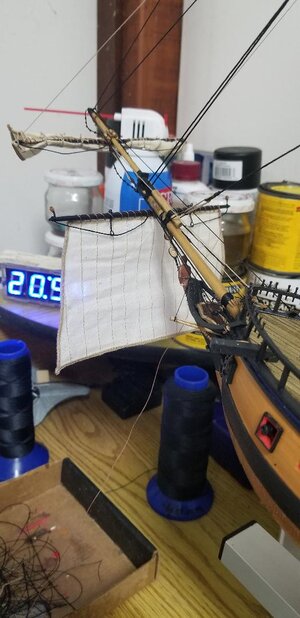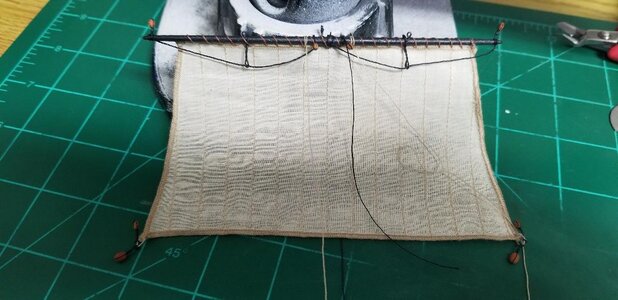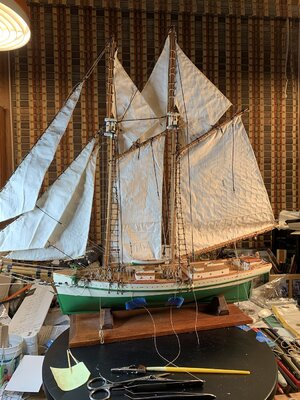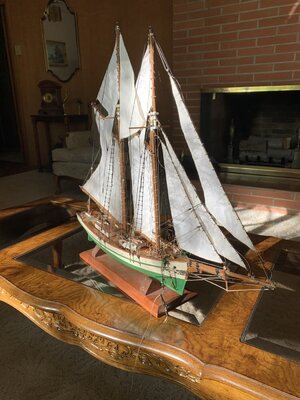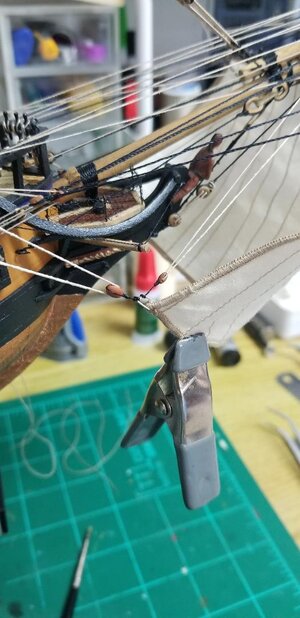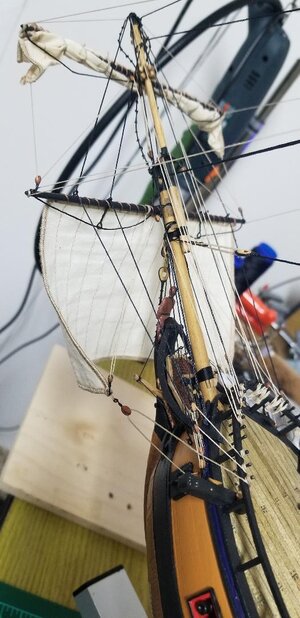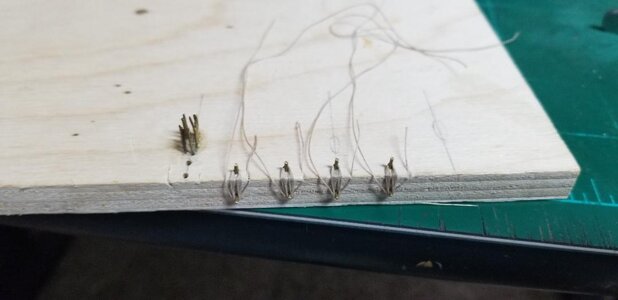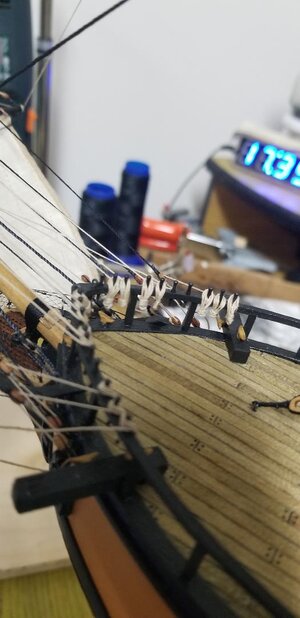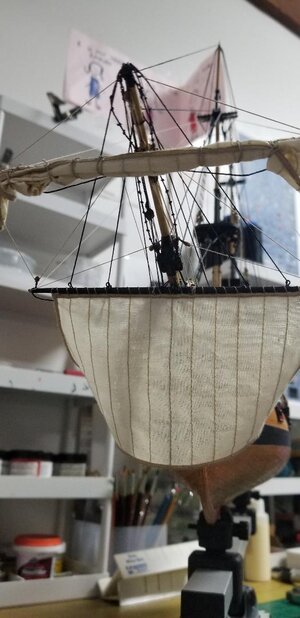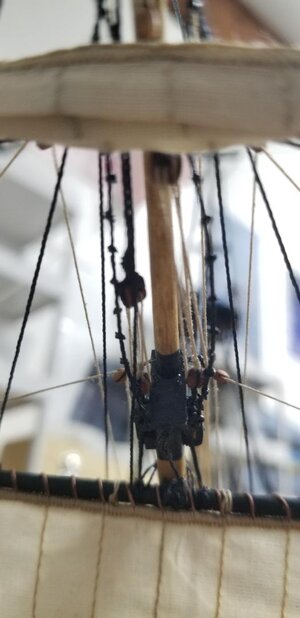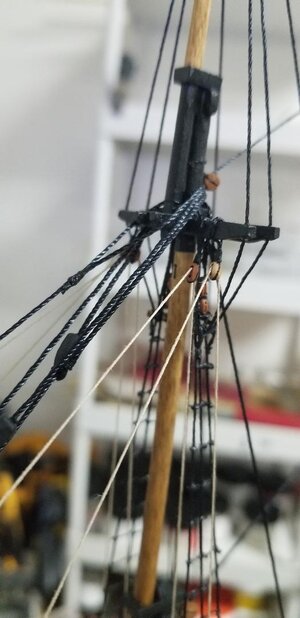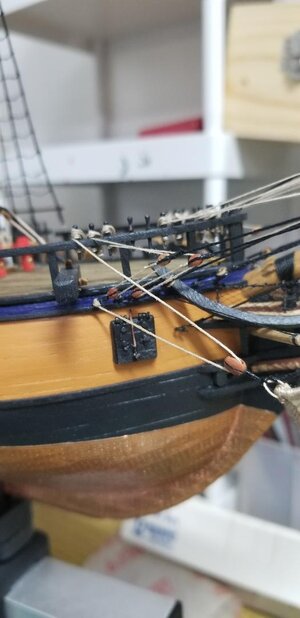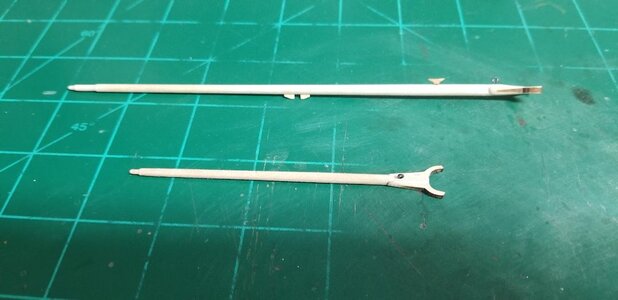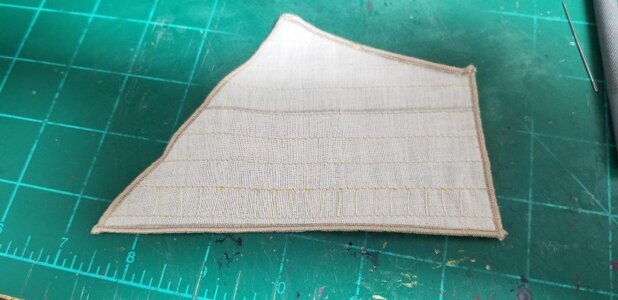I got to thinking that there are two different manners of furling: one at sea and one in port. Here are two illustrations from the book that I have shown the cover. He spends four pages and many illustrations that I am not attaching.
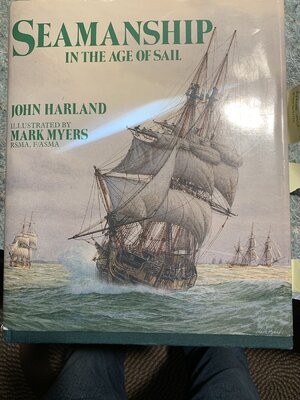
Notice the differences but basically the bottom corners are drawn up creating triangular shapes toward the mast and then bundled as the rest of the sail is folded and secured by the gaskets.
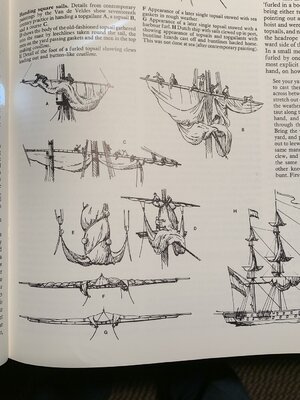
The show a close up of the furled sail on the yard.
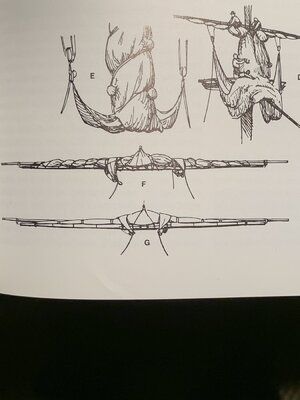
I recommend the book if you can afford it from the Naval Institute Press. PT-2
Book review - SEAMANSHIP IN THE AGE OF SAIL: An Account of the Shiphandling of the Sailing Man-of-War 1600-1860" by John Harland
Seamanship in the Age of Sail: An Account of the Shiphandling of the Sailing Man-of-War 1600-1860, By John Harland Illustrated by Mark Myers Hardcover: 320 pages Publisher: Naval Institute Press (January 15, 2016) Language: English ISBN-10: 0870219553 ISBN-13: 978-0870219559 Product...
shipsofscale.com
Last edited by a moderator:





